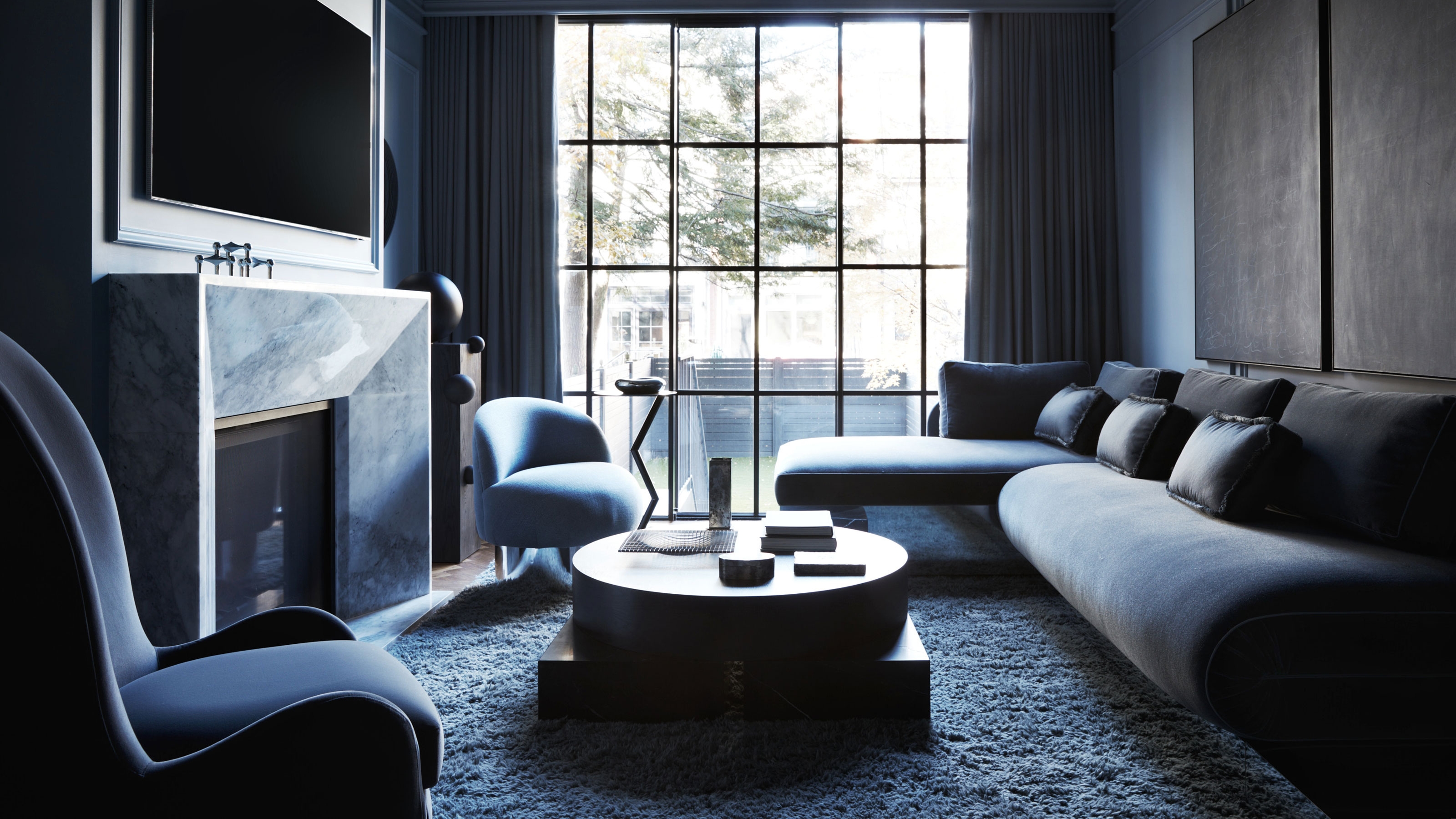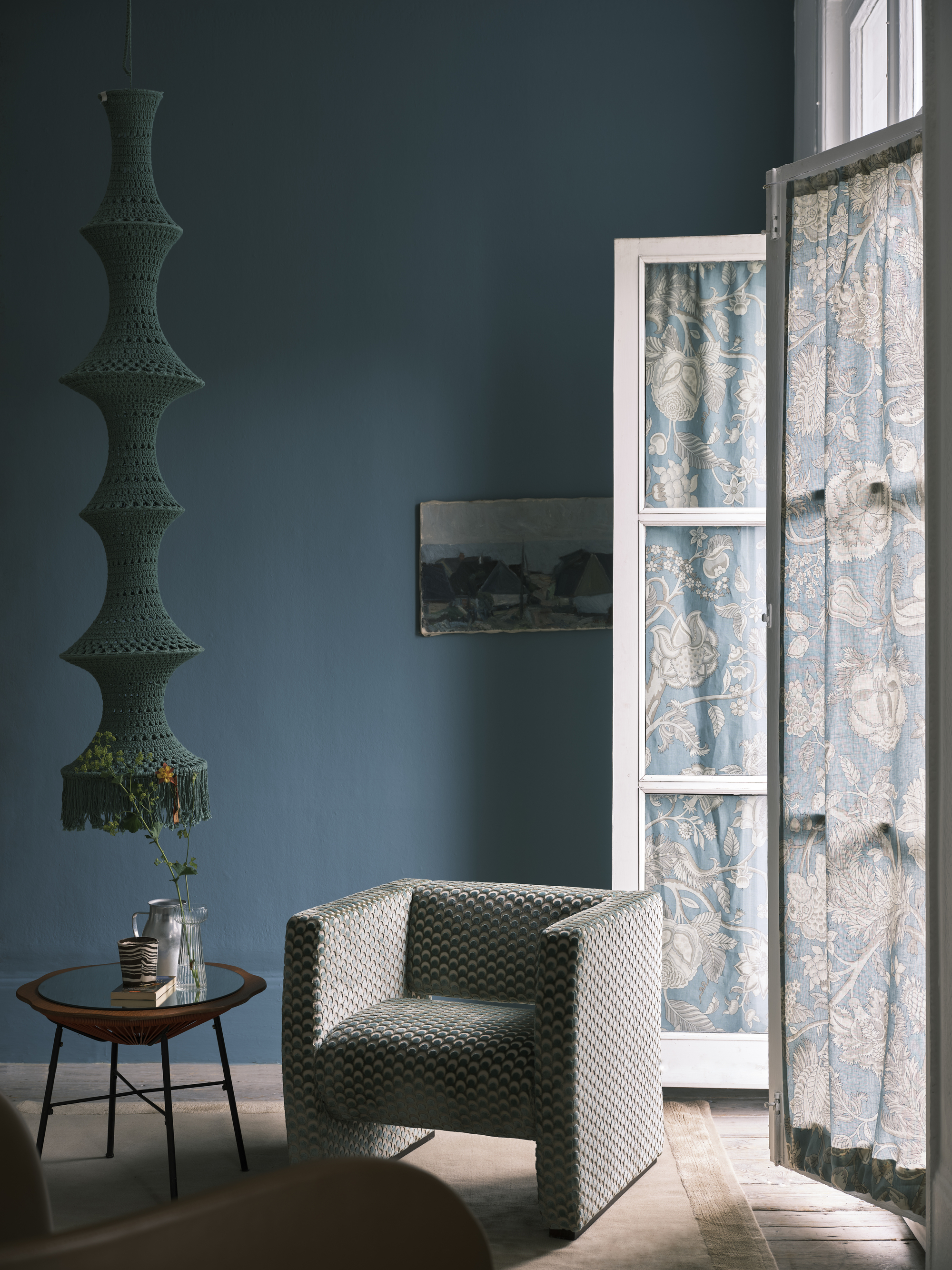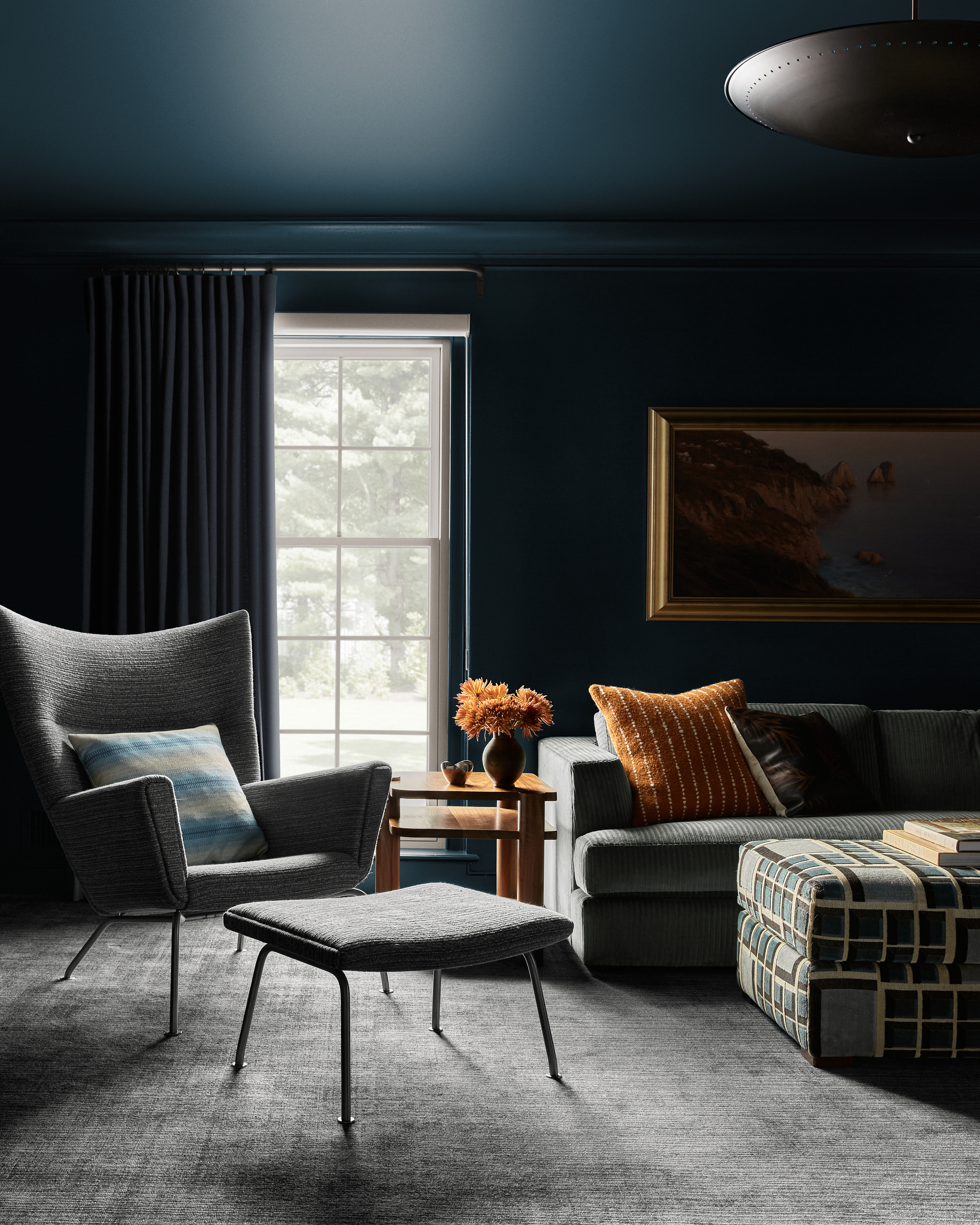
When natural light shines through a window, dark navy blues become rich and well-rounded, and soft baby blues shine with unexpected warmth. But will these shades have the same effect in rooms with less natural light? How and where to use blue in your home is not as simple as coating any room in your favorite shade. I had some big plans for using blue in a darker, north-facing room, but according to the experts, there's no need to change course — a little planning and preparation will steer me in the right direction.
So, should you decorate with blue in a north-facing room? Livingetc's color expert, Amy Moorea Wong, says, "Yes, you should use blue in a north-facing room — if you understand what you’re dealing with." The cool, diffused, often dim light that comes in from the north can make certain blues feel cold and bring out their flat side, so if you’re hoping for a more inviting feel, "blue might not be the one — unless you’re willing to put the time in finding the perfect shade, which very much can be done," says Amy.
It is true that there are times when blue makes the perfect pop and times when you shouldn't paint a room blue, but when it comes to north-facing rooms, don't let a little challenge turn you off. Blue can become a cozy, cocooning color with the right planning. Here are the best tips for preparing to paint your north-facing room blue as according to color experts.

Amy Wong says, "The first thing to remember is that there’s blue, and there’s blue and there’s blue. There’s the delicate charm of powder blue, the soft ethereality of sky blue, the purplish whimsy of periwinkle, the brazen power of cobalt, the smoky edginess of slate blue, and the midnight depth of navy blue." The blue paint shades are wildly diverse and will operate differently in north-facing rooms.
In order to make your north-facing room feel like a serene escape rather than a cold, confining space, lean into tones that will balance any coolness with their undertones, such as teal (tinted with green) and indigo (tinged with violet). Other shades of blue to consider are "jewel-like hues such as sapphire which will counteract the light with its deep richness, or a muted duck egg or powder blue which are imbued with subdued warmth," says Amy.
For drama, consider the darker end of navy blue's color family — a classic navy is always a winner when paired with warm lighting, "which brings out its beguiling depth," says Amy. Farrow & Ball's Hague Blue "work's a treat in north-facing rooms because of the underlying green note making it never feel too chilly," says Patrick O'Donnell, color expert and brand ambassador for Farrow & Ball.

Shop Shades of Blue for Darker Rooms
Work with blue joyfully, openly, and learnedly — any time you put into researching undertones and lighting conditions will come back to you in pleasure as you bask in your brilliantly chosen shade.
Before you begin your journey exploring the expansive realm of blue, Amy says, "I cannot express enough how important it is to test colors in different areas of the room, at different times of day, as blue shades are ever in flux! Do not skip this part." It isn't necessarily about how to brighten a dark room, but rather understanding how to maximize the potential of a room with less light.
"Blue has so much to give, and with such a huge wealth of shades on offer, there’s something for every mood and every space," Amy adds. Start with a few questions —What mood am I trying to conjure? What type of light is that? What other colors and materials am I using? Am I feeling light and airy, balanced and vibrant, or deep and dramatic? The right shade will materialize once you better understand how how light interacts with your space.
A dark room can become a beautiful spot in the home for relaxation and ambiance. There are plenty of stunning paint colors for rooms without much natural light, it's all about finding which one is right for you.







